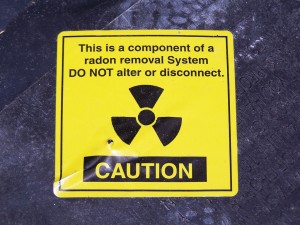 There are many people that doubt the fact that radon gas is hazardous to your health. You can even find several privately owned websites that claim to have evidence radon has been concocted — as something of a conspiracy — and totally fictional.
There are many people that doubt the fact that radon gas is hazardous to your health. You can even find several privately owned websites that claim to have evidence radon has been concocted — as something of a conspiracy — and totally fictional.
The truth is that radon gas can be extremely dangerous when you’re exposed to it over long periods of time. After all, it is directly responsible for increasing the risk of lung cancer. More than 21,000 Americans die each year thanks to radon-induced lung cancer. Worse yet, one in fifteen homes in the US are estimated to have elevated levels of radon gas within; and the homeowners probably have no idea. Since radon is odorless, colorless and tasteless it’s virtually undetectable. The only way to discover its presence is to test for it with special testing equipment.
Sadly, most people have no idea its such a problem and those who do seem to dismiss it entirely. It doesn’t matter how many health and wellness agencies declare it a problem. In case you’re wondering, here are a couple of those agencies and what they have to say about radon:
- The International Agency for Research on Cancer (IARC), which is part of the World Health Organization (WHO), has classified radon and its progeny as “carcinogenic to humans.”
- The National Toxicology Program (NTP) — comprised of several different US government agencies, including the National Institutes of Health (NIH), the Centers for Disease Control and Prevention (CDC), and the Food and Drug Administration (FDA) — has classified radon as “a human carcinogen.”
- The US Environmental Protection Agency (EPA) lists radon as the second leading cause of lung cancer and the number one cause of lung cancer among non-smokers.
Forget the agencies that claim it’s hazardous what do they know anyway, let’s take a look at some scientific studies and evidence that it truly is dangerous. Perhaps that will convince you?
Scientific Studies on Radon Gas
Several studies were conducted, and they found that exposure to radon gas over long periods of time increases the risk of lung cancer. That risk eventually builds up until it overflows, which essentially means you’ll get the disease one way or another.
These studies were comprised of the following:
- Studies of underground miners working in areas with high levels of radon exposure. Most of these studies focused on workers in uranium mines. However, workers from other types of mines were also found to be at risk, and were also linked to high instances of lung cancer.
- Studies that compared the average radon levels in homes of those diagnosed with lung cancer with the levels found within homes of those that did not have the disease.
- Studies that compared the total number of lung cancer instances or deaths in areas with differing levels of radon exposure.
- Studies of lab animals show an increased risk for lung cancer after exposure to radon gas. These studies have also revealed, breathing in radon significantly increases the risk of lung tumors. The risk is increased exponentially if the animal breathes in cigarette smoke and radon. In addition, the risk of other cancers was increased, such as cancer of the lip, nasal cavity and bladder.
- Studies by the American Cancer Society found that people living in areas with elevated radon gas levels are at a higher risk of dying from chronic obstructive pulmonary disease (such as emphysema and chronic bronchitis).
 All of these studies have shown that radon gas is hazardous to one’s health, though the true impact of exposure is highly debated. It is obvious that lung cancer risk is even greater in smokers who have also been exposed to radon.
All of these studies have shown that radon gas is hazardous to one’s health, though the true impact of exposure is highly debated. It is obvious that lung cancer risk is even greater in smokers who have also been exposed to radon.
In addition, lung cancer is not the only form of cancer or pulmonary ailment that’s been linked to radon gas. Several long term studies of uranium miners found they have a higher risk of contracting other types of cancer, as well. Unfortunately, since the miners — involved in those studies — were not exposed to elevated levels of radon gas, it is not clear whether or not radon is the cause of those cancers. They may instead be linked to uranium dust or other hazardous elements the workers encountered within the mines.
Radon Gas is Truly Hazardous to Your Health
The next time you — or anyone else you know — wants to raise the question whether or not radon gas is truly hazardous to your health, consider this: radon testing kits are available for less than $20 at any local hardware store or online. Wouldn’t it be smarter to test your home for the presence of this silent, yet deadly gas before making any assumptions?
If you do find elevated levels of radon gas within your home, don’t panic. It is not costly or expensive to fix the problem, despite what many may claim.
Secure your health and your family’s health. Test your home. Find the problem, if there is one. Take action.


